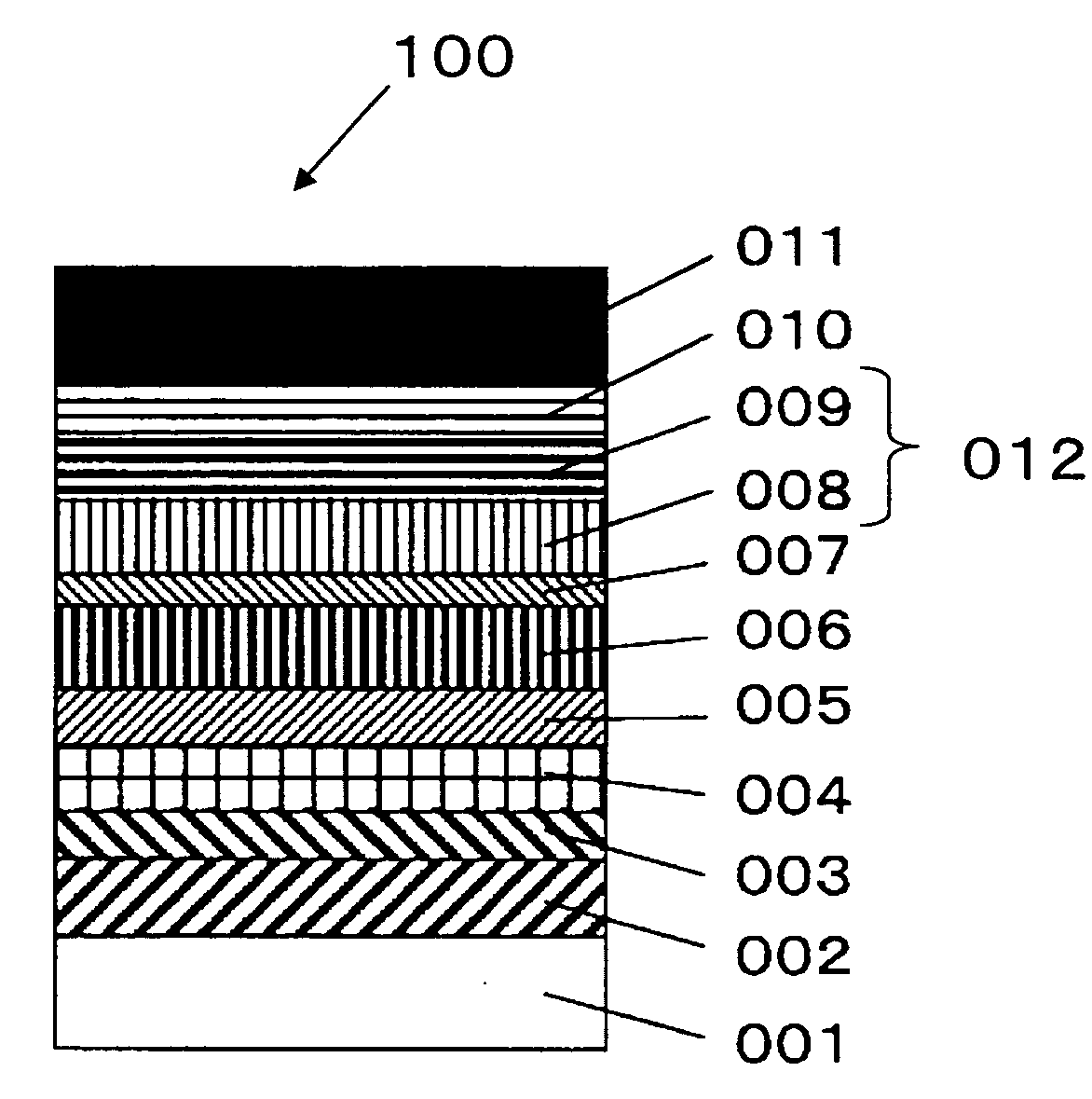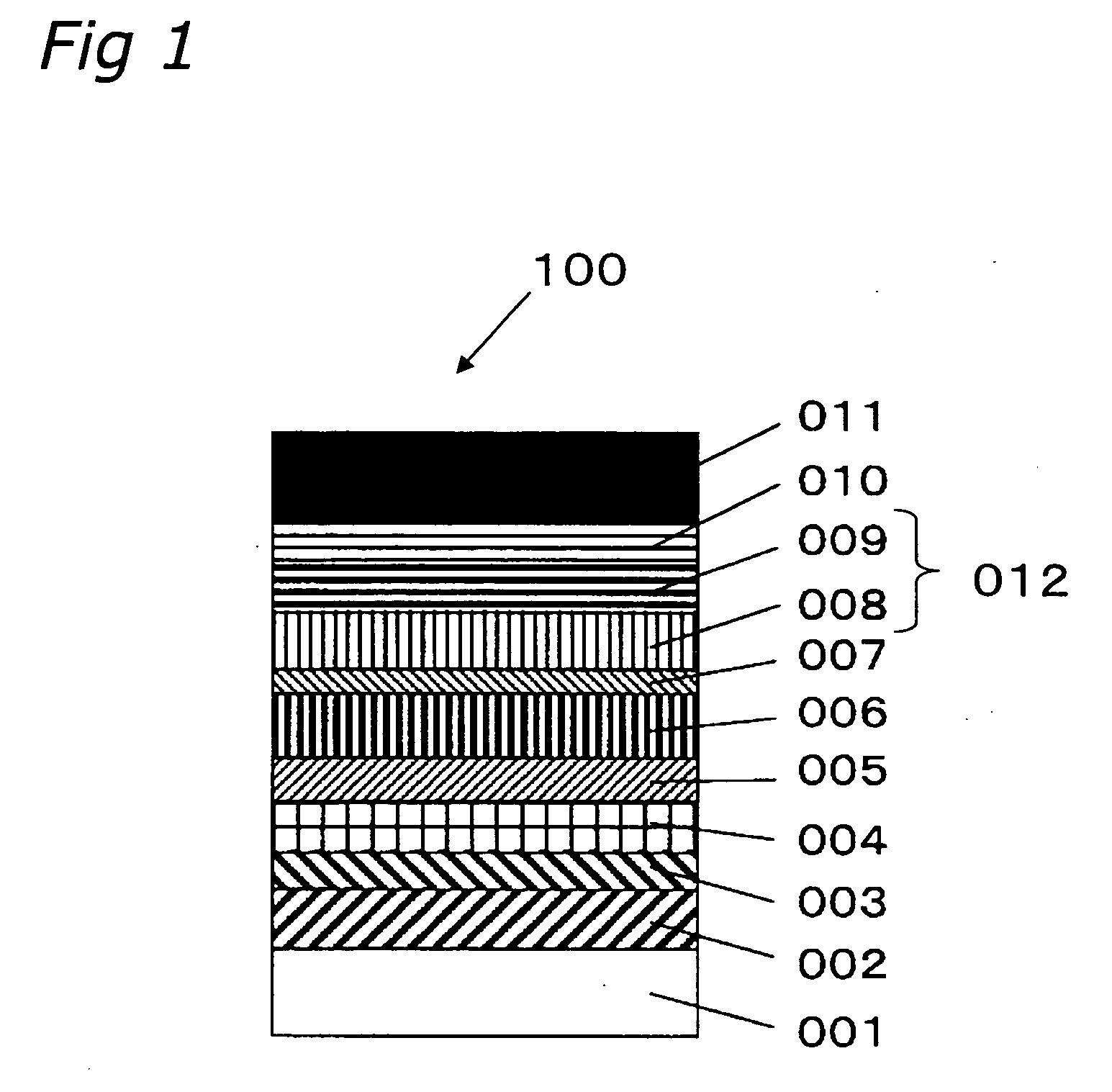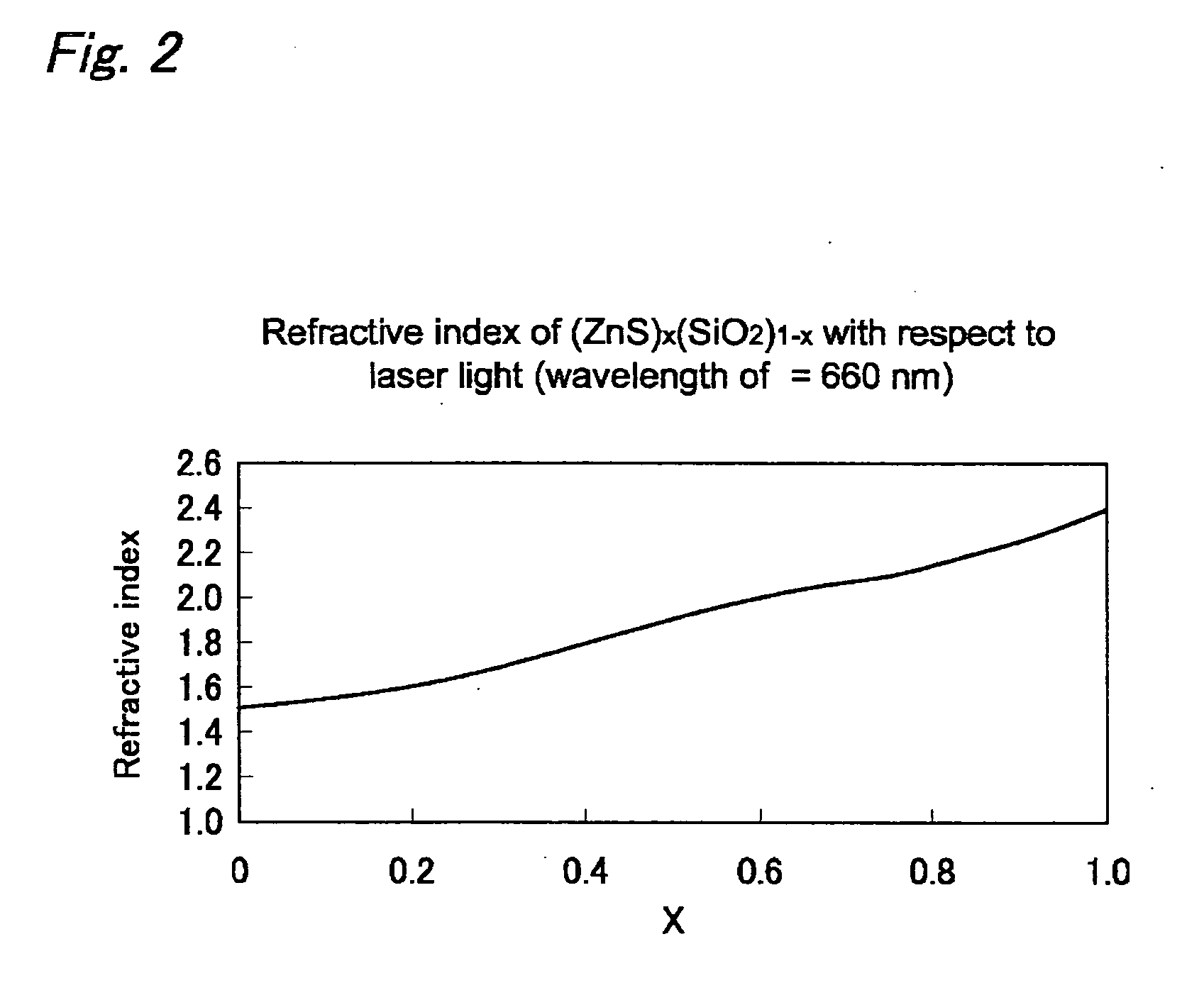Optical Information Recording Medium and Method for Recording to the Same
a technology of optical information and recording medium, applied in the field of optical information recording, can solve the problems of deterioration of recording signal quality, longer film formation period, and higher production cos
- Summary
- Abstract
- Description
- Claims
- Application Information
AI Technical Summary
Benefits of technology
Problems solved by technology
Method used
Image
Examples
embodiment 1
[0032]A recording medium comprises at least a reflective layer, a light-absorbing layer, a reflected light side protective layer, a recording layer, an incident light side protective layer, a resin layer and a transparent substrate in the sequence above a substrate.
[0033]The substrate has a guide groove in order to guide the laser light. As the material, a resin such as PM A, or glass or the like can be used. In addition, the substrate is formed with alternating groove portions and land portions. Furthermore, substrates with different ratios for the widths of groove portion and the land portion can be used. Although there is no particular limitation on the film thickness for the substrate, a value ≧0.1 mm and ≦1.2 mm is preferred. If the film thickness is ≧0.1 mm, it becomes easier to suppress heat damage during formation of the thin film, and if the film thickness is ≦1.2 mm, the portability of the recording medium can be ensured.
[0034]The reflective layer is composed of a material...
embodiment 2
[0051]Next, an example will be mentioned of a method for the recording / reproducing and erasure of a signal on the recording medium of Embodiment 1 above.
[0052]The recording / reproducing and erasure of a signal employs a recording / reproducing device that is provided at least with an optical head that includes a semiconductor laser light source and an objective lens, a driving device for guiding the position of irradiation by the laser light, a tracking and focusing control device for controlling the track direction and the position along the vertical direction on the film surface, a laser driving device for modulating the laser power, and a rotation controlling device for rotating the recording medium.
[0053]For a signal to be recorded or erased, the rotation controlling device is used to rotate the recording medium, and the laser light is narrowed down to a microscopic spot for carrying out the irradiation. The EFM modulation method is used as the signal system. By modulating a power ...
example 1
[0063]The main structure and method of manufacturing for recording medium 100 of the present Example are explained using FIG. 1.
[0064]Recording medium 100 comprises above substrate 001 in sequence reflective layer 102, light-absorbing layer 003, reflected light side protective layer 004, reflected light side diffusion barrier layer 005, recording layer 006, incident light side diffusion barrier layer 007, incident light side protective layer 012 (first material layer 008 and second material layer 009), resin layer 010, and transparent substrate 011.
[0065]Substrate 001 had a thickness of 0.6 mm and used a disk-shaped polycarbonate resin substrate with a diameter of 120 mm.
[0066]Reflective layer 002 was formed as a 160 nm film using an Ag98Pd1Cu1 (atom %) alloy target.
[0067]Light-absorbing layer 003 was formed as a 30 mm film using an Si66Cr34 (atom %) alloy target.
[0068]Reflected light side protective layer 004 used a mixture of 20 mol % of SiO2 in ZnS as the target, and when the rec...
PUM
| Property | Measurement | Unit |
|---|---|---|
| thickness | aaaaa | aaaaa |
| thickness | aaaaa | aaaaa |
| thickness | aaaaa | aaaaa |
Abstract
Description
Claims
Application Information
 Login to View More
Login to View More - R&D
- Intellectual Property
- Life Sciences
- Materials
- Tech Scout
- Unparalleled Data Quality
- Higher Quality Content
- 60% Fewer Hallucinations
Browse by: Latest US Patents, China's latest patents, Technical Efficacy Thesaurus, Application Domain, Technology Topic, Popular Technical Reports.
© 2025 PatSnap. All rights reserved.Legal|Privacy policy|Modern Slavery Act Transparency Statement|Sitemap|About US| Contact US: help@patsnap.com



